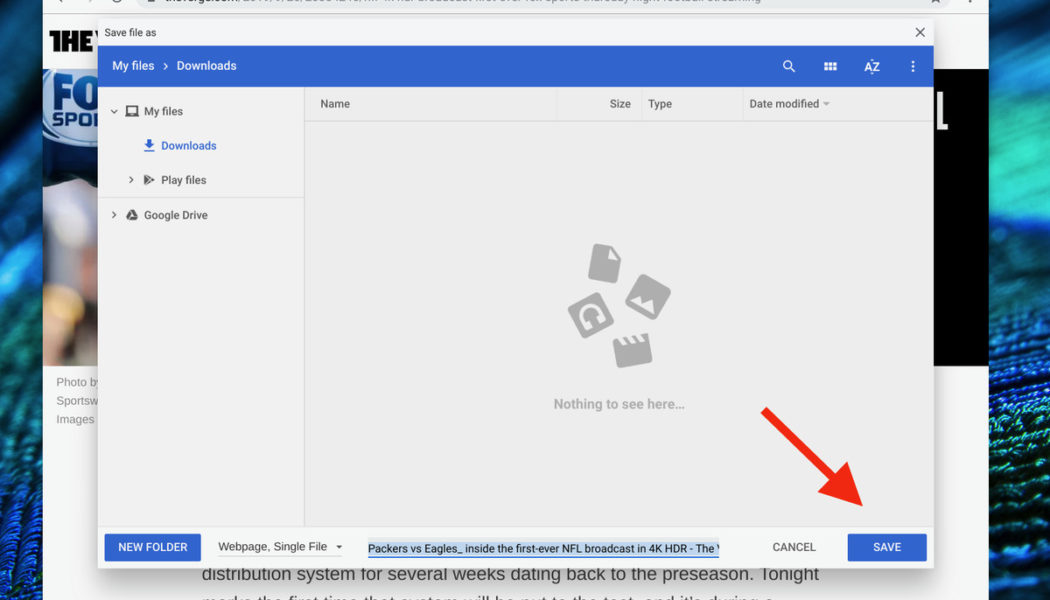A few years ago, I was shopping for a Chromebook to take on a business trip. I wanted something lightweight enough to carry around all day and inexpensive enough that I wouldn’t mind as much when I spilled coffee on the keyboard. I was considering two different models when a sales rep came over to see if I needed help. “You’re aware,” he said, “that these are Chromebooks, right? They only work online; you can’t save any files to the hard drive.”
It wasn’t the first time I’ve caught a sales rep in a mistake, of course. But this is a mistake that seems to have persisted.
Yes, Chromebooks were created to be used predominantly online. In fact, when the first Chrome OS laptops were introduced in 2011, there were very few apps that could be used offline, which was a major flaw. But that was then, and this is now.
Currently, apps such as Google Docs and Sheets (which are the basic apps for Chrome OS) can be used both online and off. In addition, you can save files locally to the laptop’s SSD or, with some models, an SD memory card.
If you’ve just bought your first Chromebook or are considering one, here are the basics of how to save your files on your Chromebook and find them again.
Save your files
Saving a file in a Chromebook is pretty much like saving a file in macOS or Windows. You can save a file in one of two ways:
- Press Ctrl + S, or
- Right-click on the image or file you want to save and select “Save as…”
Either way, you’ll bring up the Files app (the equivalent of the Mac’s Finder or Window’s File Explorer). Select which folder you want to save your file to from the listing on the left, and then click on the Save button in the bottom-right corner. (If you want to change the name of the file, you can do that in the field to the left of the Save button.) You can also save and retrieve files from Google Drive from here.
:no_upscale()/cdn.vox-cdn.com/uploads/chorus_asset/file/19238246/Screenshot_2019_09_26_at_4.52.51_PM__1_.png)
The Files app comes preloaded with a Downloads folder, but you can easily create your own folders by clicking on the New Folder button in the bottom-left corner.
Find your files
To find your saved files, here’s what to do:
- Click on the Launcher button in the bottom-left corner of the screen.
- An apps window will emerge from the bottom of the screen. If you’ve used the Files app recently, it will be listed just below the search field with other recently used apps. Click on it.
- Otherwise, click on the “up” arrow just above the search field to see all the apps in your Chromebook, and click on the Files app.
:no_upscale()/cdn.vox-cdn.com/uploads/chorus_asset/file/19238253/Screenshot_2019_09_27_at_9.45.13_AM__1_.png)
The Files app also automatically organizes your files into Recent, Audio, Images, and Videos folders to make those types of files easier to find.
:no_upscale()/cdn.vox-cdn.com/uploads/chorus_asset/file/19238255/Screenshot_2019_09_27_at_9.46.29_AM__1_.png)
Keep in mind that while you can save a reasonable number of files, most Chromebooks come with a relatively small amount of storage. Most offer anywhere from 64GB to 256GB, although there are still some lower-cost machines with 32GB and some premium systems with 512GB. You won’t have the same capacity as you would on a typical Mac or Windows system, but since most Chromebook users tend to save their content in the cloud rather than on their local systems, this shouldn’t be much of an issue.
Update June 7th, 2022, 3:53PM ET: This article was originally published on September 27th, 2019, and has been updated to account for an increase in the amount of storage included in most Chromebooks.









